Maui
The Valley Isle
We have traveled extensively
throughout Maui from our
home base in sunny Kihei.
The pictures below are but
a small sampling of
this beautiful island.
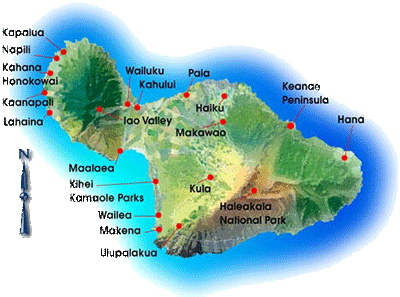
As the locals say: Maui no ka'oi ... Maui is the best!
|
Maui The Valley Isle
The pictures below are but |
 |
|
As the locals say: Maui no ka'oi ... Maui is the best!
|
|
|
|
|
|
Looking north along Kamaole Beach #2,
with the ever-present clouds over the West Maui mountain. |
|
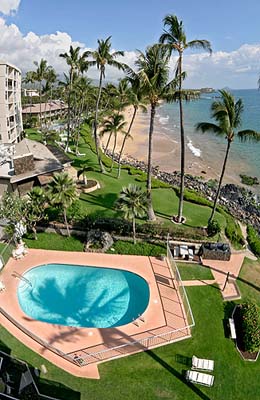 |
|
| Two views from the lanai (balcony) of our condo, looking south over Kamaole Beach #2. . This is why we come every year! |
|
|
|
|
|
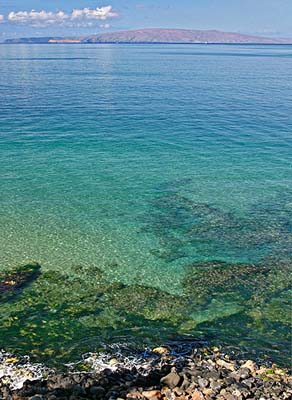 |
||
|
This Myna bird hung around every morning, |
||
|
|
||
|
The reef just off our building provides a popular spot for snorkeling And the beach is a favorite place to take a stroll, either at sunrise or sunset.. |
||
|
In Northern Kihei is a old pier at the end of a small bay, home to the Kihei Canoe Club.
|
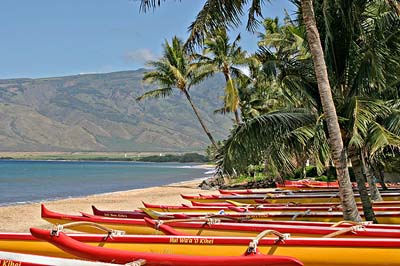 Their colorful red and yellow canoes are frequently sighted early in the morning. The canoes all bear Hawaiian names: Kealohapumehana "The Greatest Possible Aloha." |
|
|
|
Ka Makani O Kihei
Hoku Ho'okele Wa'a
|
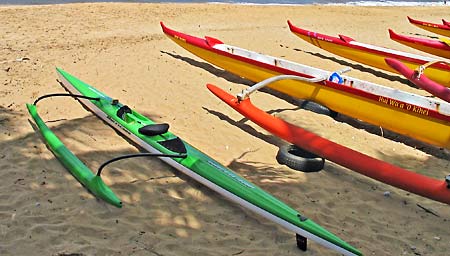 Maybe this is just a baby canoe, still green. When it grows up and ripens, will it be a rich red and yellow also? |
South Maui, beyond Makena
| As you head south, leaving behind the irrigated lawns of Kihei and Wailea, the terrain changes. The coastline becomes rugged, influenced by the most recent lava flows from Haleakala. The land, situated in the rain shadow of the mountain, is arid with scrub brush and many prickley pear cactus. There is a wild beauty down here, much different from the manicured landscape of the Wailea resort area. | ||
|
The shoreline is defined by lava flows. Although several hundred years old, the lava looks as if it were recent. Bits of coral and red lava fill the tidepools, looking south toward Kaho'olawe. |
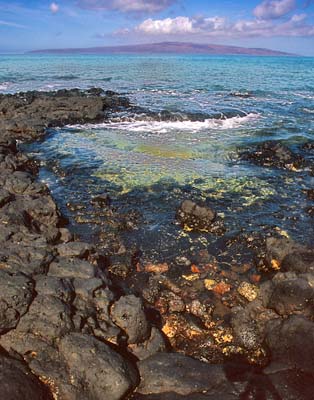 |
|
|
|
||
| There are several beautiful beaches along the southern coastline, but our favorite is one we call Secret Cove. It's literally accessible through a hole in a wall. A favorite spot for weddings, it was empty one afternoon when we visited. | ||
Up Country and Haleakala, the Great Volcano
| The Eastern part of Maui is dominated by the 10,000-foot dormant volcano Haleakala, the "house of the sun." It gives rise to several microclimates, from the lush rainforests of the northeast to the desert-like grazing lands of the southeast. At higher elevations "up country" there are flower and vegetable farms, and a number of cattle ranches. The Hawaiians are proud to tell you that the "Wild West" originated on Maui and the Big Island, when Mexican cowboys were imported to tame the herds of wild cattle that grew from the long-horned cattle presented to King Kamehameha by Captain George Vancouver in 1793. Nowadays the Hawaiian paniolos are more likely to ride an ATV than a horse when tending cattle, but the tradition lingers in the upcountry town of Makawao. Each year the town holds an old-fashioned July 4 parade and rodeo. | |
 |
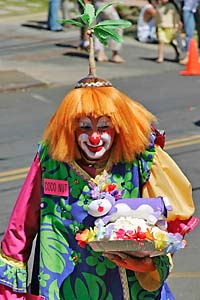 |
|
|
|
| The western theme has a distinctly Hawaiian flavor, with flowered leis for both horse and rider. | |
|
. |
The parade is all fun, but the rodeo is serious business |
|
|
|
|
|
|
|
|
|
|
Past Makawao, in the upcountry town of Kula, is the beautiful Holy Ghost Mission, built between 1884 and 1897 by Portuguese immigrants to Maui. |
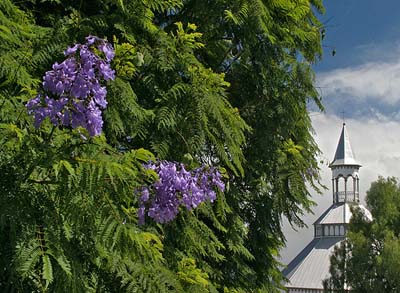 |
|
|
|
| Restored in 1994, its unusual octagonal form encloses a beautiful and ornate interior with a hand-carved altar and works of art for the stations of the cross. | |
|
|
|
|
|
|
| Continuing past Kula, the road climbs to the top of the great volcano Haleakala. On a clear day, you're treated to an otherworldly view of colors and shapes. |
|
|
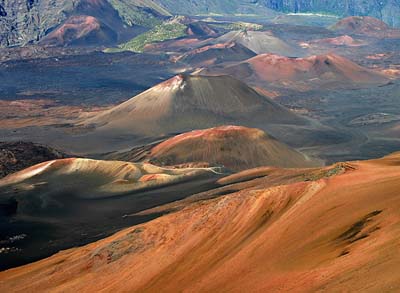 above - The Sliding Sands
trail leads down into the crater. You can make the trip on foot (for the young and hearty) or by horseback (for
the rest of us). above - The Sliding Sands
trail leads down into the crater. You can make the trip on foot (for the young and hearty) or by horseback (for
the rest of us). |
|
|
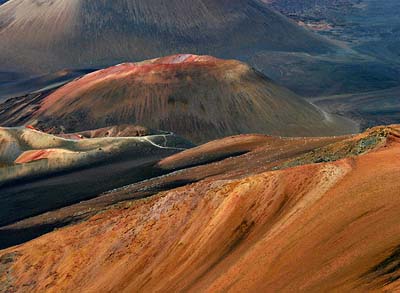 The views from the overlooks appear more like a moonscape than something from earth. All this only an hour's drive from the palm trees and hula girls of the stereotypical Hawaii. |
|
|
| Continuing past Kula on another road brings you to the Ulupalakua Ranch, a working ranch raising beef cattle and elk (with a few peacocks). In the 19th century this was the Rose Ranch, a prosperous sugar plantation. The most historic area of the ranch contains buildings built in 1874 for King David Kalakaua and his queen Kapi'olani, who visited often to find peace of mind from his turbulent reign. The remaining buildings, shaded by century-old trees, remind us of a fascinating bygone era in Hawaii. |
|
|
Northwest Maui Coast - Ho'okipa
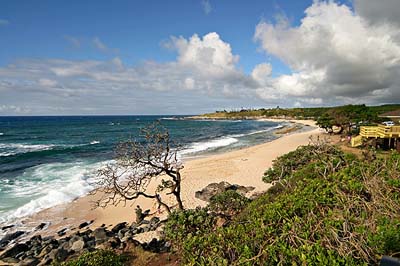 |
Along the famous road to Hana lies Ho'okipa Beach. The steady trade winds
and strong surf make this a favorite location for world-class windsurfers. It's one of our favorite spots for action
pictures. Not a place for beginners! |
|
|
|
 |
 |
 |
|
|
|
|
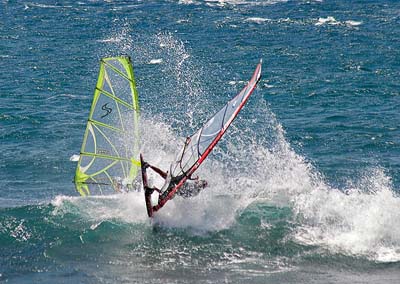 |
|
West Maui
| The island of Maui consists of the remains of two volcanos: the great Haleakala on the east, and the smaller West Maui Mountain on the west. They are joined by a broad valley, planted with pineapples and sugar, and populated by the two main cities of Kahalui (home to the airport) and Wailuku (the county seat). |
|
|
 Ka'ahumanu Church, Wailuku (1837) |
| The road to Hana gets all the hype, but the road along the northern coast of West Maui is narrow, winding and spectacularly scenic. | 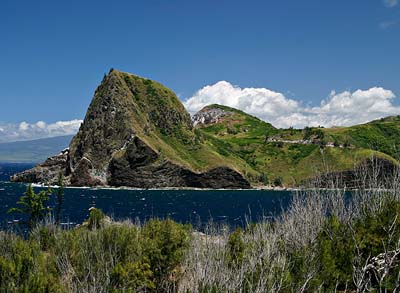 |
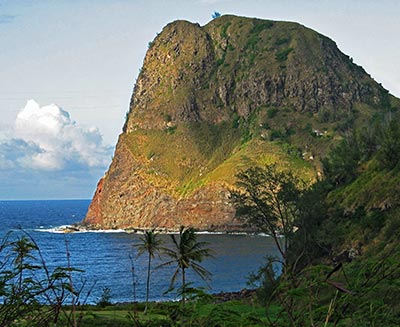 The road narrows down to one lane as it passes Kahakuloa Head, seen here in daylight and at sunset. |
|
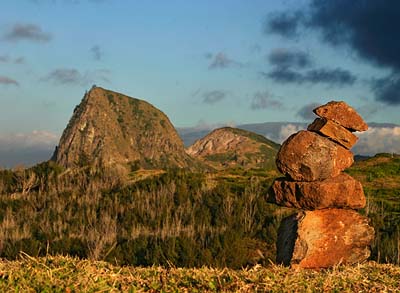 |
|
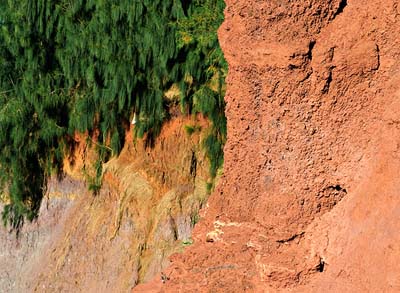 The volcanic nature of the island is evident in the multicolored soil exposed in the roadside cuts. |
|
|
|
|
 |
On the eastern side of West Maui Mountain is the narrow Iao Valley, scene of the bloodiest fighting during King Kamehameha's quest to rule all of the Hawaiian islands. At the head of this valley is the famous Iao Needle. |
|
|
|
|
Kihei sunsets. |
|
|
|
|
 |
 |